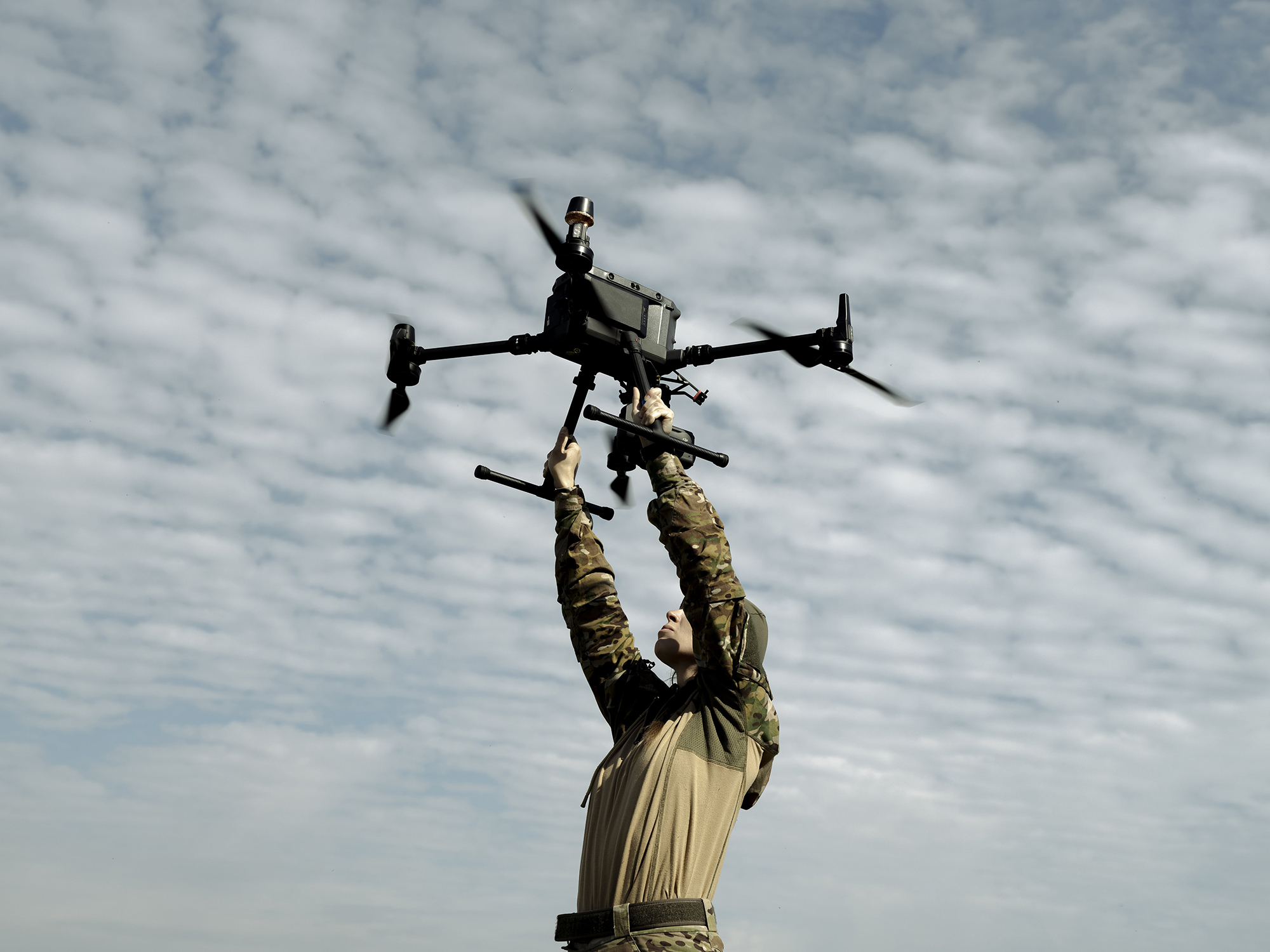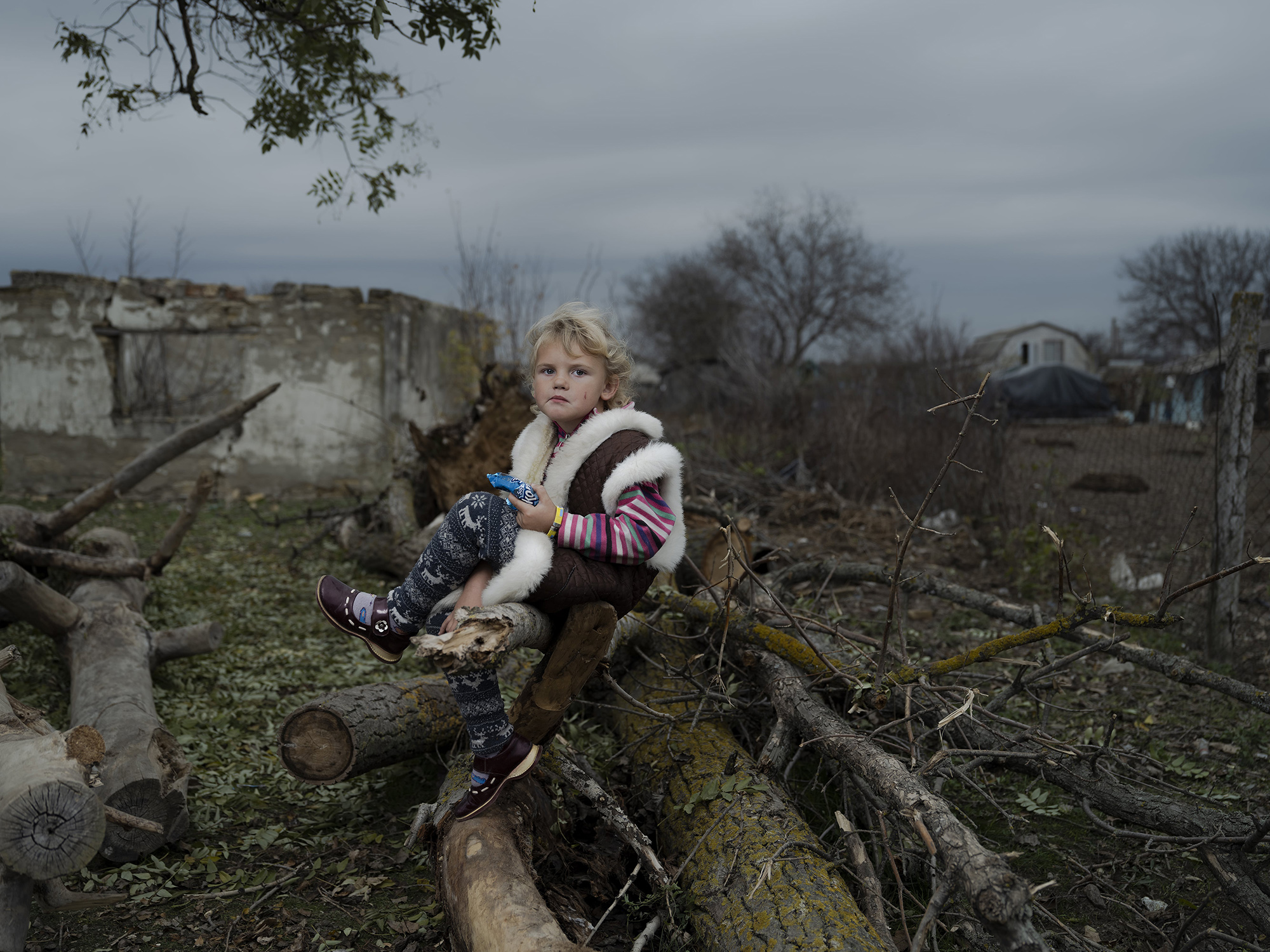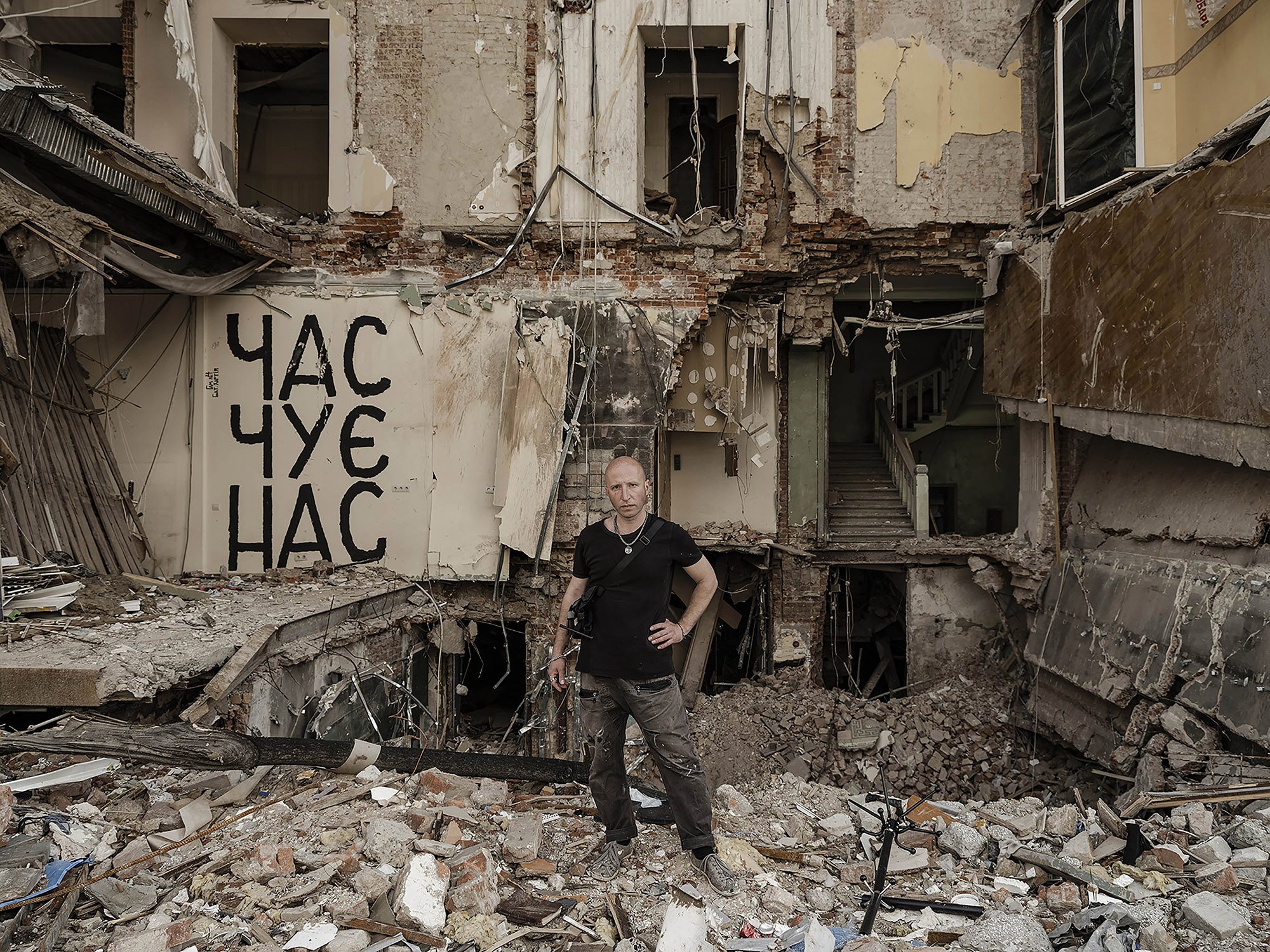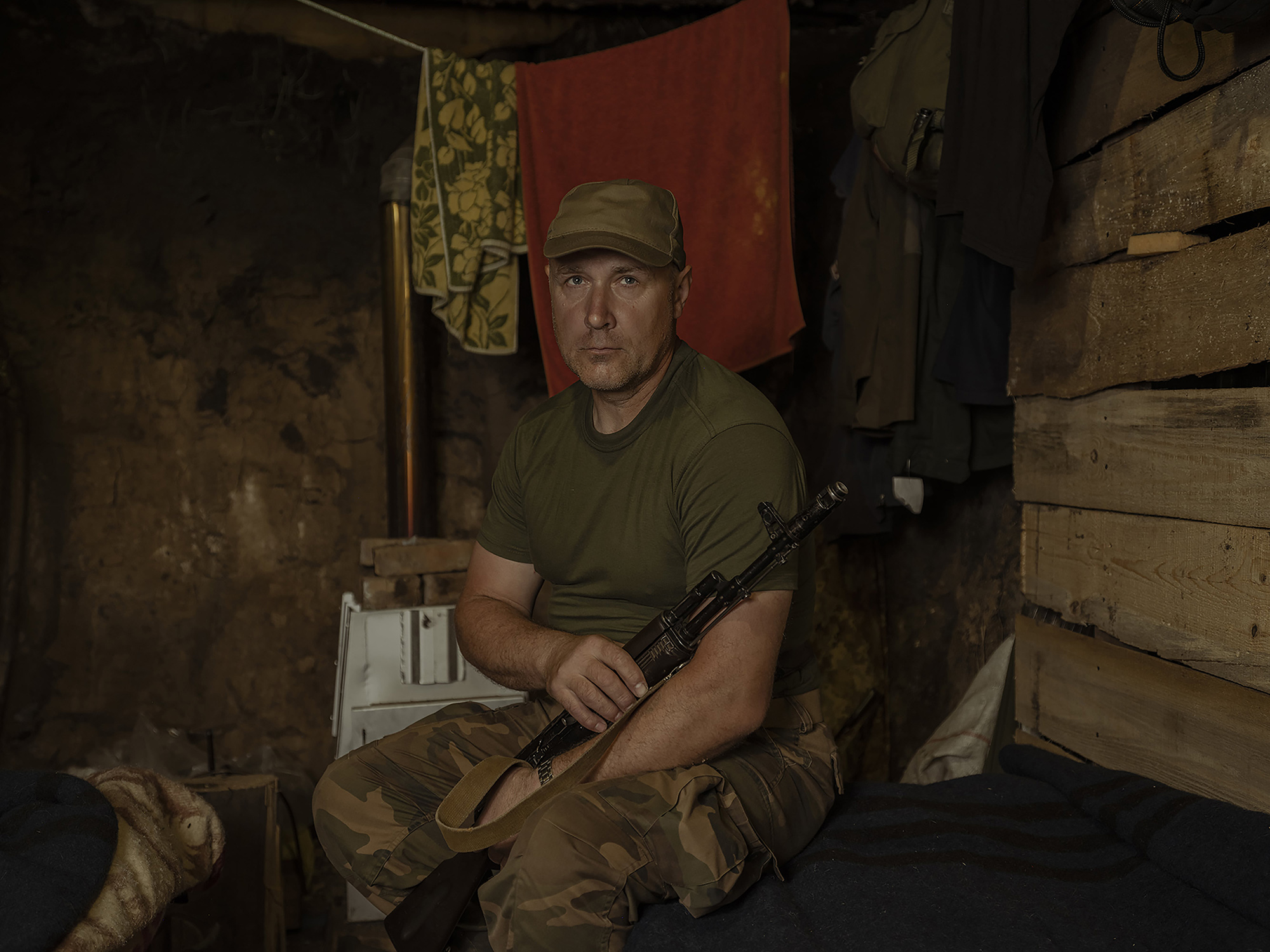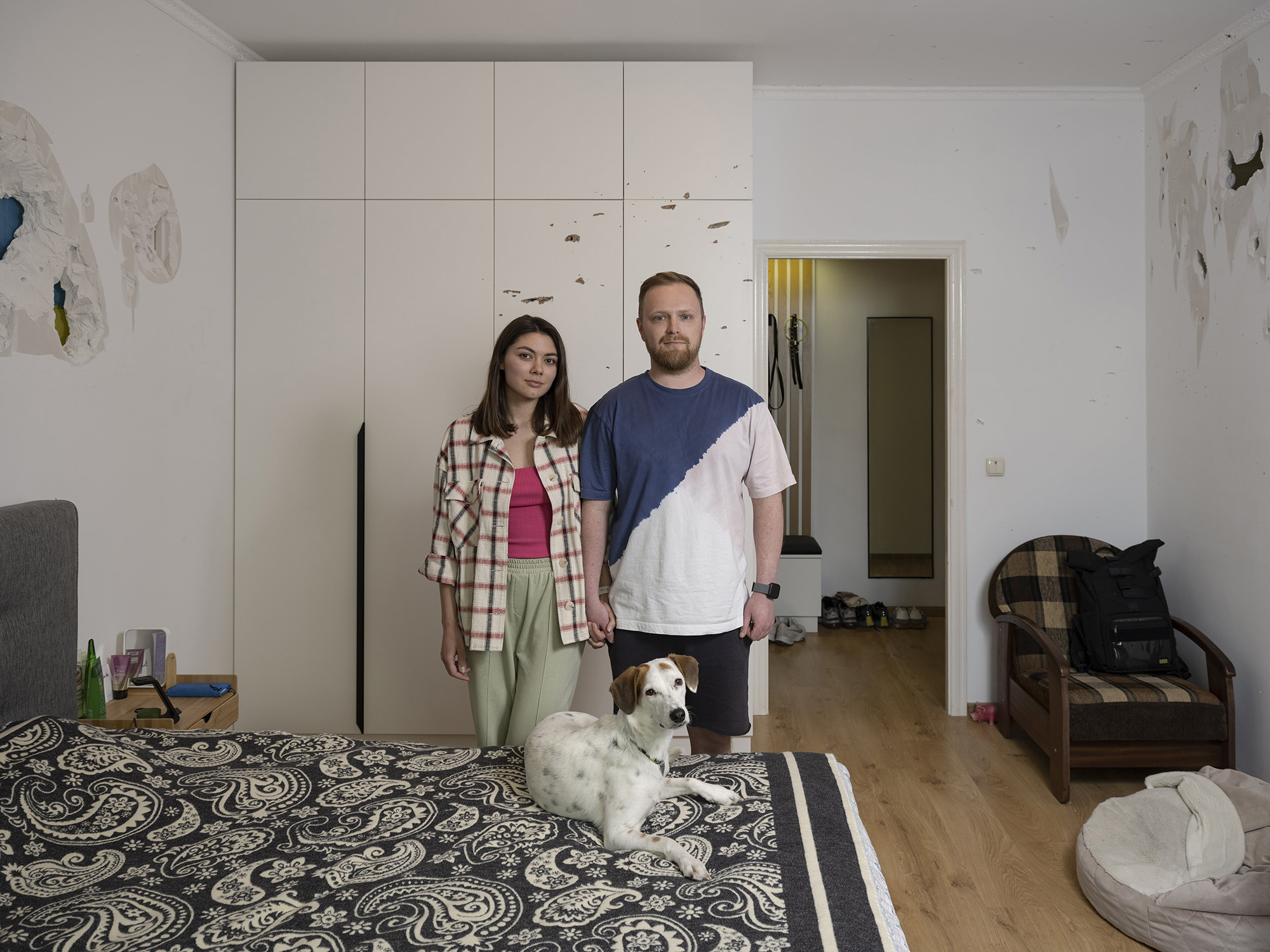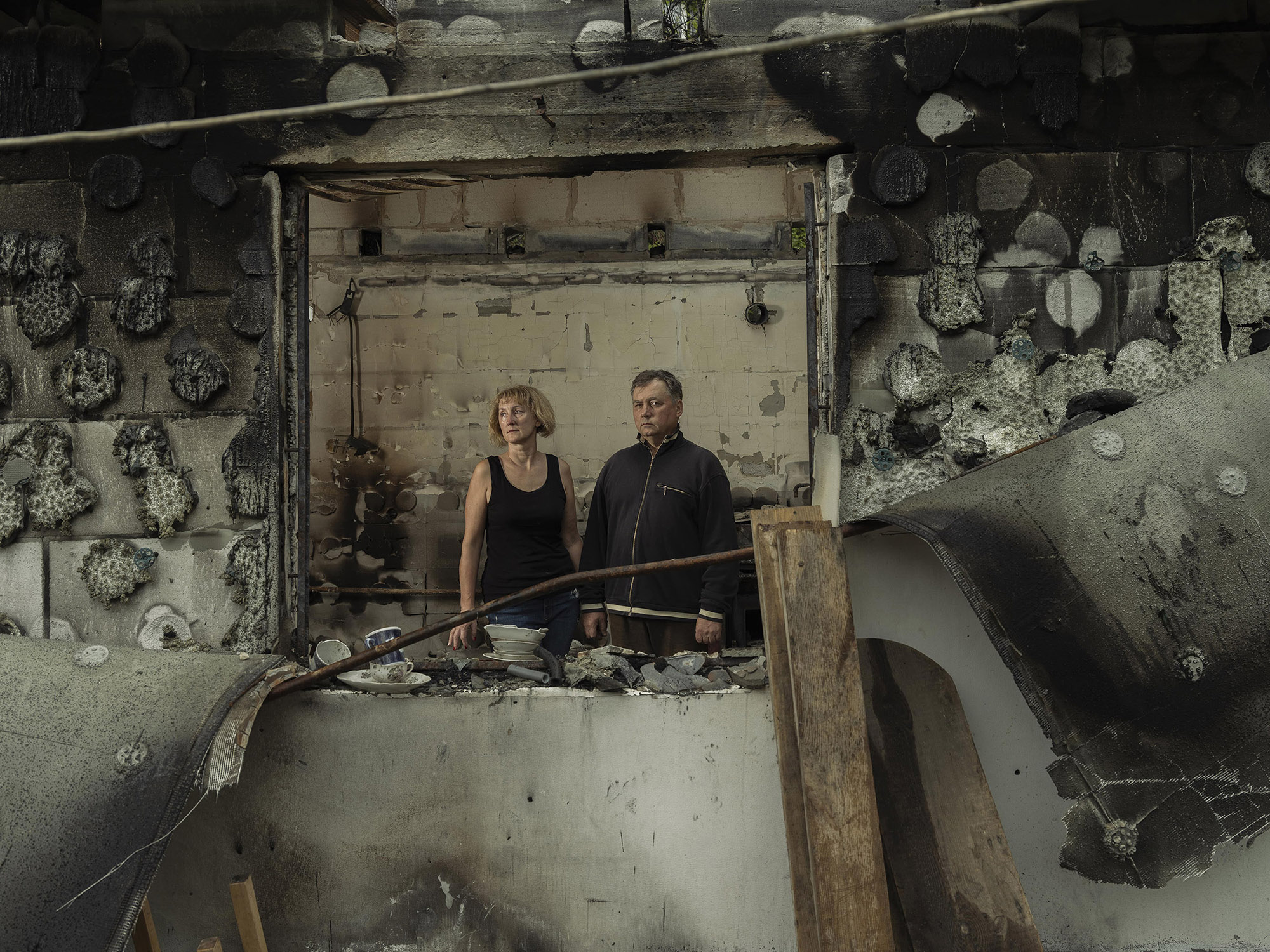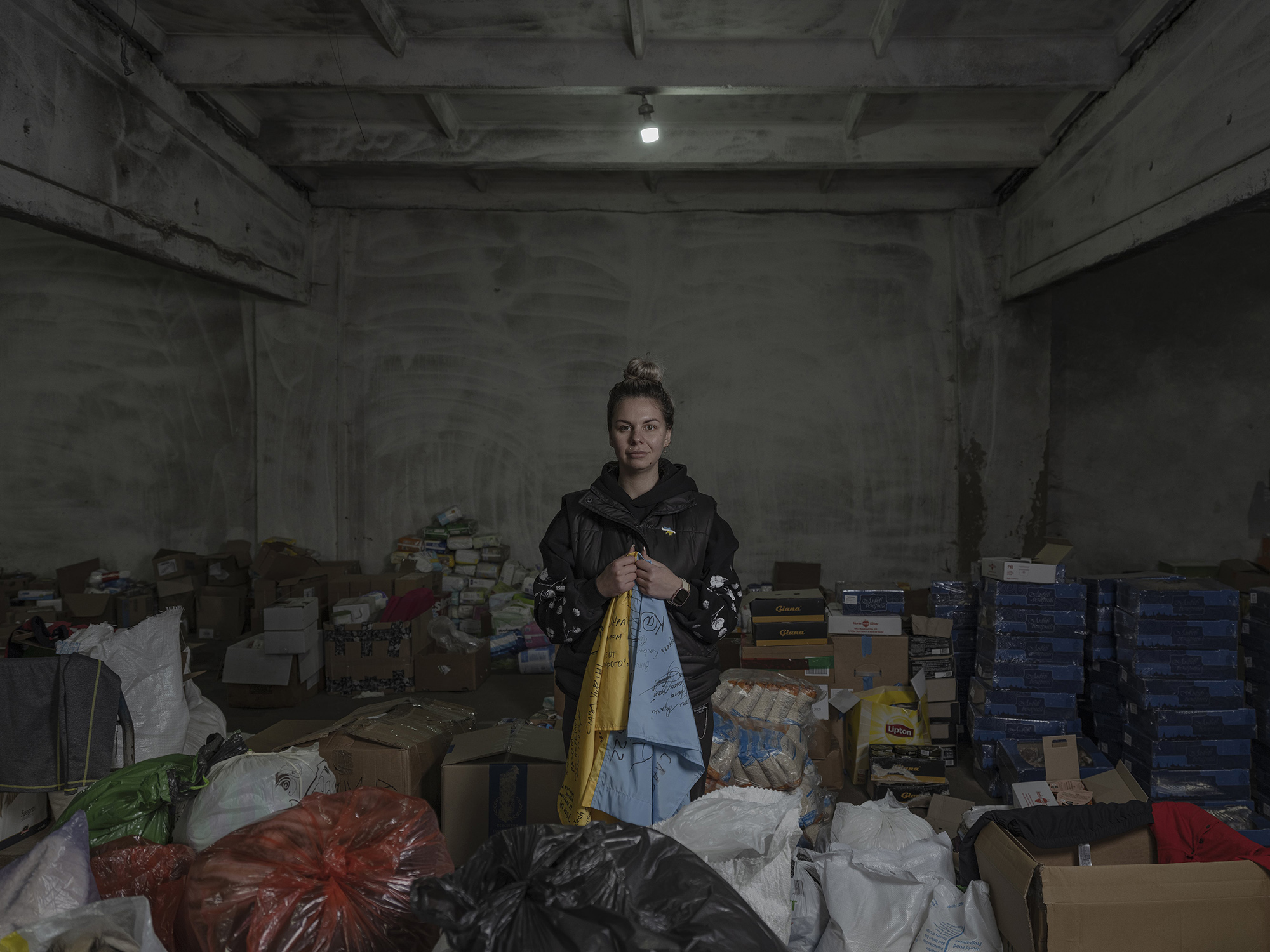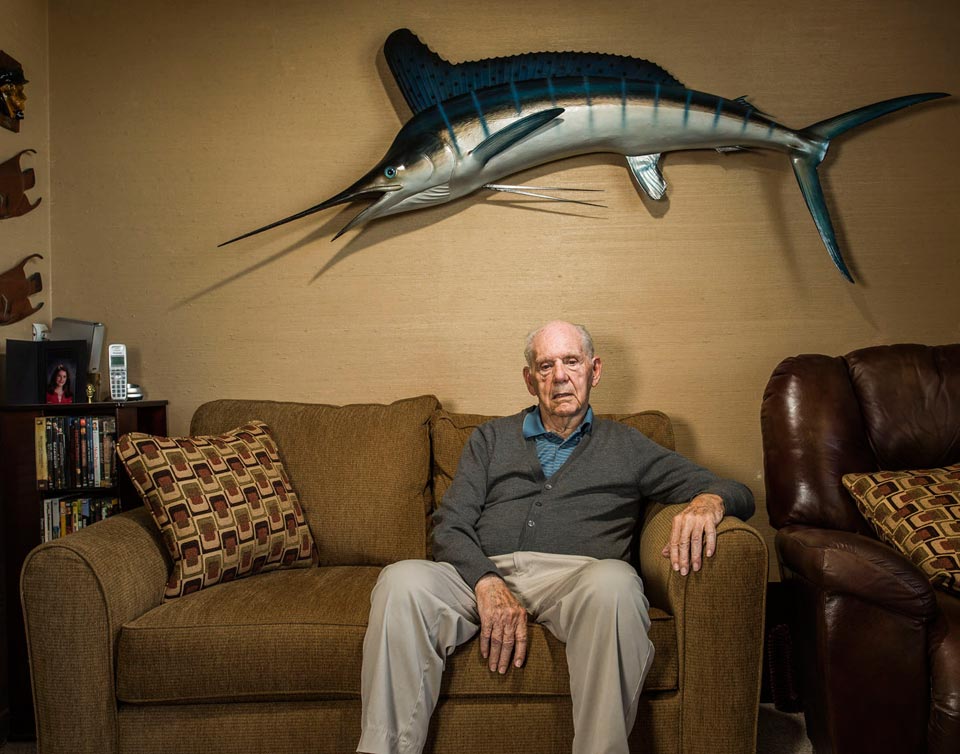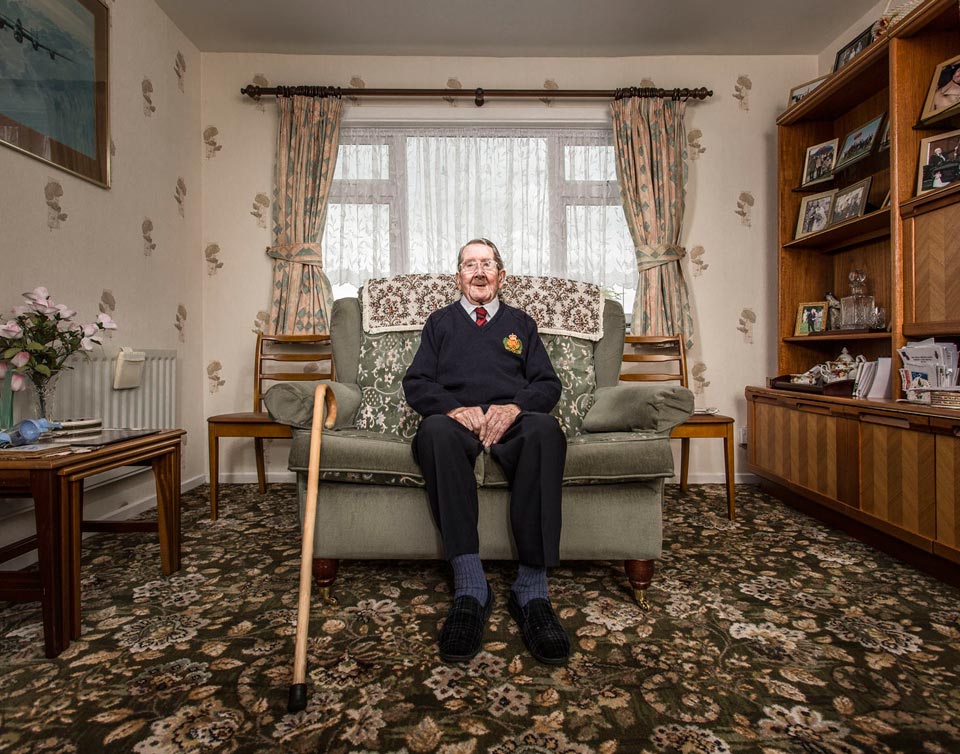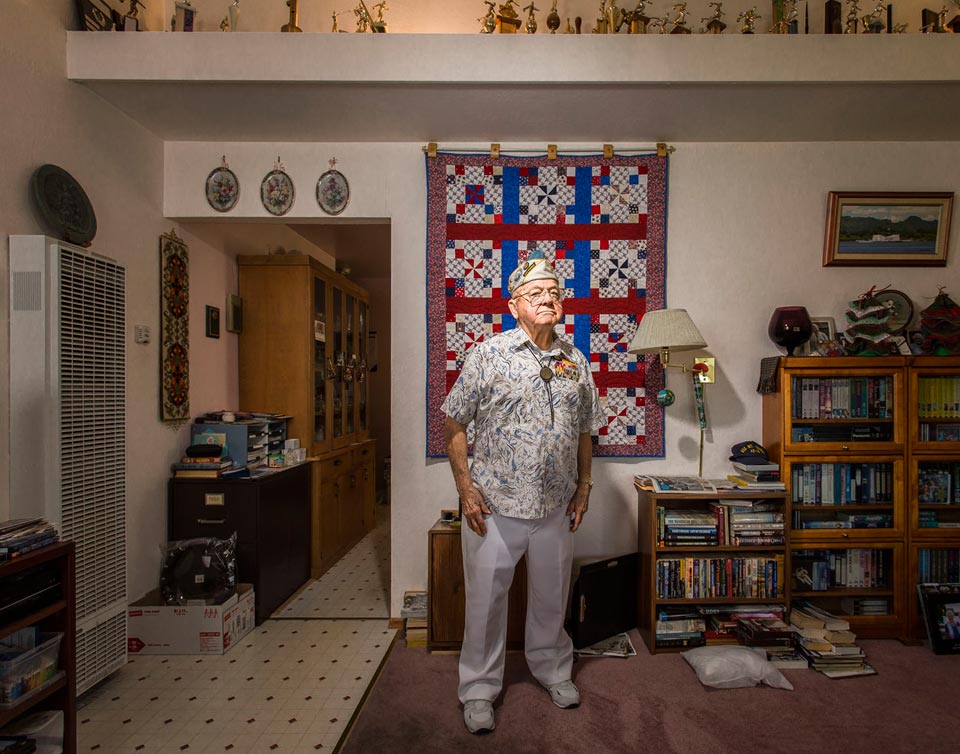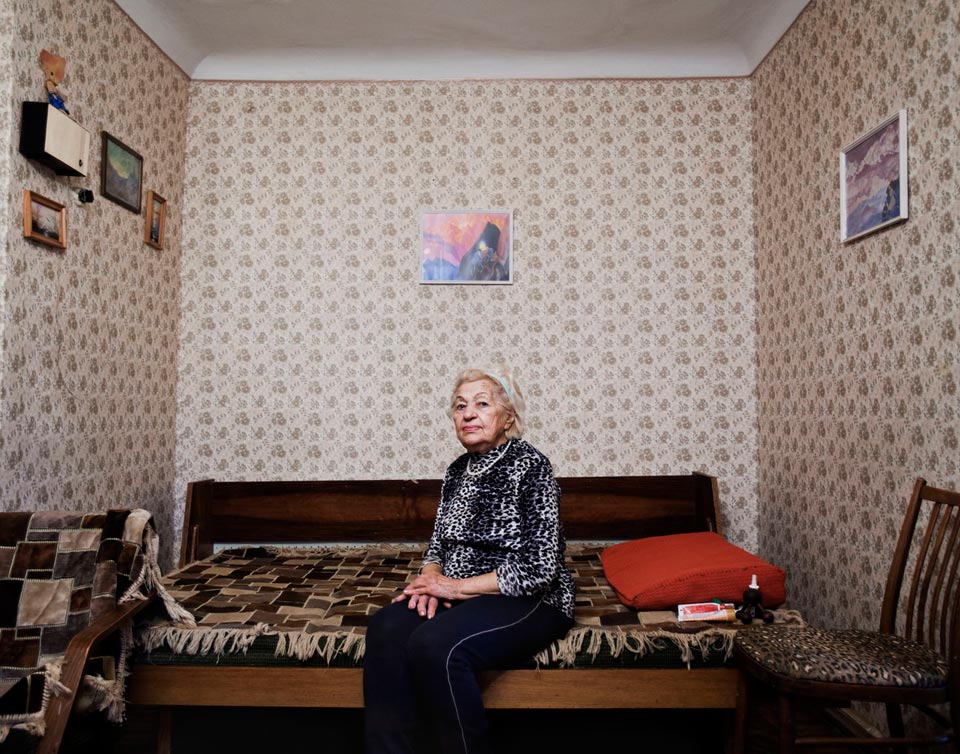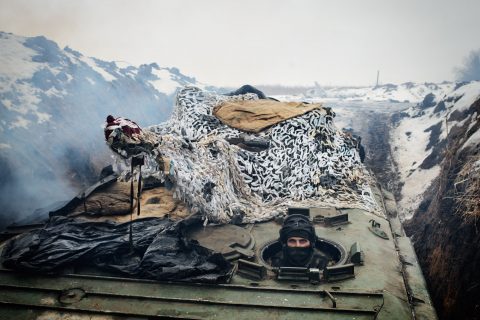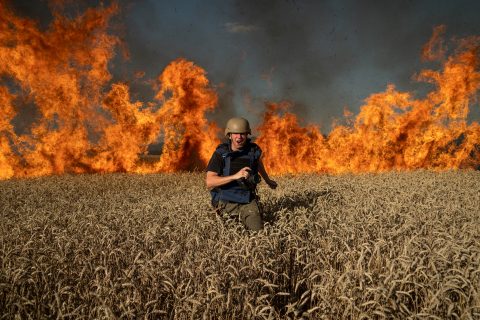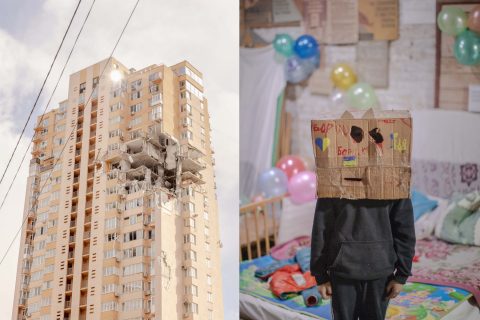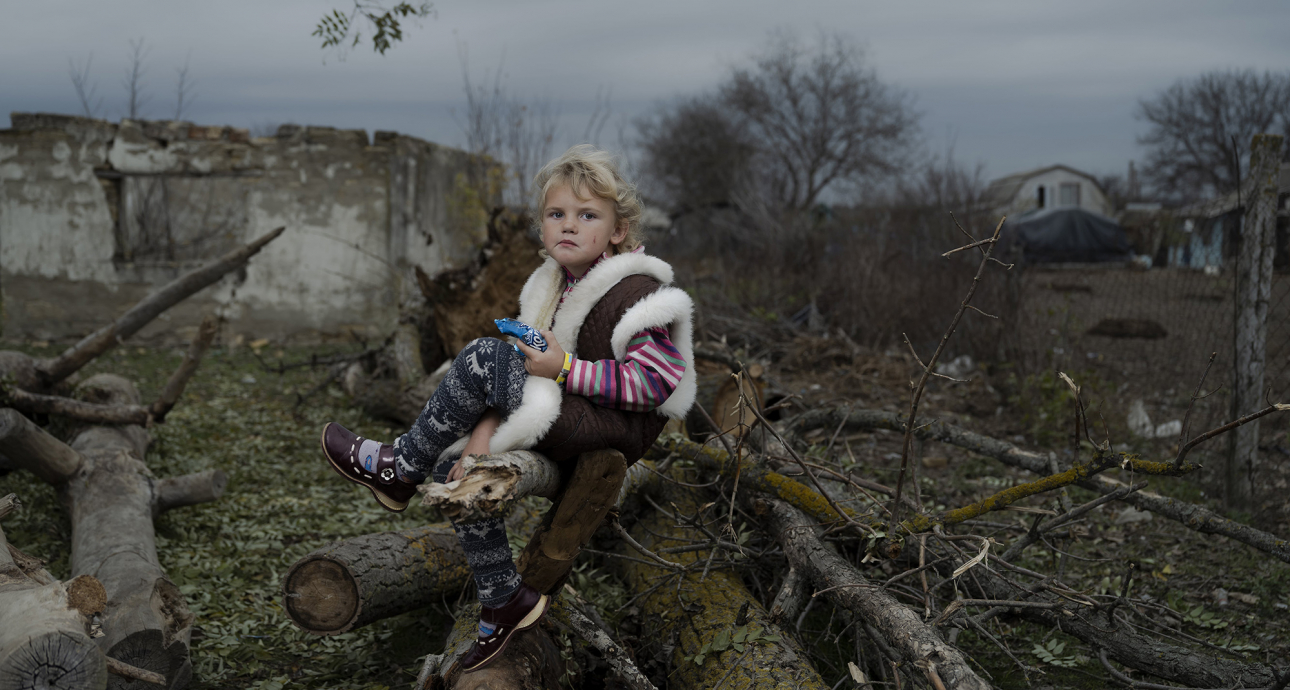
‘Ukraine Will Keep Dominating the International News Landscape Even after We Win’: Photographer Sasha Maslov on Working with Foreign Mass Media During the War
Sasha hails from Kharkiv. He started out shooting for Ukrainian media and then moved to the USA, where he continued his photography endeavours, working on his own projects as well as those for international publications. Since the start of Russia’s full-on invasion, he has been regularly visiting Ukraine. Bird in Flight discussed with the photographer how the attitude of foreign audiences to the war in Ukraine changes, what impression Volodymyr Zelenskyy made on him, and why some of his work was never published.
What is your schedule like today?
I shoot in Ukraine, then go back to New York to take a breather and work on the photographs, and, finally, fly to Ukraine again.
Did it take you long to decide to go to Ukraine?
No. I quickly got all the things done in New York and arrived in Ukraine in early March.
What were your first impressions of the country at war?
I can’t remember now. I was so revved up and looked forward to working on the stories.
Over the first few days of the war, it was hard to tell what happened where and how to get where you needed to be. I directed all my attention at figuring those out.
The world apparently started discovering Ukraine for real only after the war began. Do you agree?
It did, but not in the way we’d like to.

Did the global attention to Ukraine bring more work?
The thing is that I told my editors from the start I would be working in Ukraine. Did my Ukrainian roots help, you might ask? They certainly did. After all, I understand how this country works as much as other Ukrainian journalists. I don’t need a fixer. I know whom I’m going to call and where the roads will bring me. It’s a compelling advantage.
Russian propaganda pushes the idea that this war is not Russia vs Ukraine but Russia vs the USA. Did you meet Americans that believed as much?
Russian propaganda doesn’t work in the USA anymore. During Trump’s campaign, it aimed to undermine American politics. To their credit, they stirred up quite a trouble at the time. However, now everything is different.
The Americans are all pro-supporting Ukraine but don’t consider themselves a party to the conflict. They don’t want US citizens to participate in the hot phase of this war. Still, their attitude might change if we see a major escalation.
While in Ukraine, you might get the impression that Americans could soon get tired of the war in their news. Could they?
I don’t want to give Putin any advice, but freezing the conflicts in Transnistria, Nagorno-Karabakh, and Donbas indeed worked. The situation in Ukraine is different now, though, and there is no way it will develop into a frozen conflict. So, whatever happens next, people won’t get tired of this war or forget about it. Too many things depend on its outcome, in the USA included.
Ukraine is currently the world’s number one story. And we will still have global attention even after the war. Investments will come, too. The corporations that had to close their businesses in Russia will look for a new gateway to Eastern Europe, and they will be very interested in our country.
I have a very optimistic view of the future, though I don’t believe the war will end tomorrow. However, I do know for sure that it will end with Ukraine’s victory.
They won’t forget about the war, but for how long would they keep reading the stories about it in the media? Did the number of requests for work in Ukraine fall?
Sure, the interest subsided as compared to when the war began, when editors wanted all the tiniest details. But it’s nothing unusual. Now the media want to run stories about something that stands out more. Recently, I shot a story about the reconstruction of the Antonov Plant: a big story about a big industry and a big plane.
Requests for personal stories have become fewer, but I still get to work on them. Their importance is hard to overstate, and they are the main direction of my work, after all.
Still, sometimes I feel the people have grown tired of the war. Not of the topic per se, but from how the journalists cover it — those unending monologues of the witnesses and terrifying photos from the places that came under shelling. I am under the impression that the war should be covered in some other way. Don’t journalists and media professionals have to look for new meanings and formats?
It’s an excellent question. People indeed get tired of the same narratives in the same way as they get tired of hearing the same song on the radio. However, I don’t think journalists are responsible for this fatigue. We must tell the story the way it is — it’s our work that we must keep doing.
If they don’t take responsibility for that, don’t you think journalists risk overlooking the moment when their stories become white noise to readers and viewers?
If we try to turn our media into entertainment, we will stop being journalists. Our goal is to convey information that would help people understand what is going on. Still, not causing any harm is the priority.
Delivery of the information depends on the professionalism of a journalist, photographer, or videographer. There are many opportunities here to benefit from.
Do you approach the editors with your topics to cover, or is it the other way around?
It’s fifty-fifty.
What publications do you primarily work for?
I worked on stories for The Washington Post and Libération. Long story short, I can’t say there’s some primary publication.
What earns you more money: taking the suggested topics or approaching editorial offices with your own projects?
Well, you shoot editorial stories for editorial money and your projects for yours. You can put much time into your story, but then it never sells. I won’t go deeper into this issue, though, not to show off as a high-level photographer.
For sure, though, my stories sell better now than five or ten years ago because I have built a reputation for myself and won the trust of editorial offices.
Have your materials ever been turned down?
Not that they were turned down — it’s just they lost relevance. Some stories take me too long to finish. There was one about people with disabilities living in Bakhmut — it included several portraits and a general account of the situation. We delivered the story the day after the Queen died. The focus shifted to the Royal Family, and my story didn’t get published. It did later, though, even if only partially.
The Bakhmut story was my own. In the case of editorial jobs, it happens much more frequently because the global news cycle is faster than that in Ukraine.
Did you get to photograph Zelenskyy?
I did.
What was it like?
It was really quick. We were given about thirty seconds for everything. Although it was hard to get any impression of him over such a short time, Zelenskyy looked tired to me, although still strong. He even cracked a few funny jokes.
You talked a lot about your professional path in the USA and the tough competition. How did you stay motivated to compete with so many pro photographers?
I moved to the USA as a teenager. When I first arrived in Chicago, I was blown away by the city’s scale — its big roads, big trucks, and the airport. My flight departed from Boryspil’s Terminal B, which looked more like a bus stop or a news stand in comparison. America captivated me from day one.
My teenage maximalism kept me motivated. Having to compete helped a lot, too. I wanted to be more creative and engaging. It’s like you know if you don’t do something, somebody else will do it.
Over my first few years in New York, relaxing wasn’t an option because I didn’t have a backup plan. I didn’t want to return to Ukraine and do something else. Besides, photography was the only thing I knew.
For how long were you knocking on the metaphorical doors before someone opened?
They say you have to live in New York for two years to understand if it’s your city. It took me two years to get on my feet there. Still, I keep knocking on those doors to this day, even though finding new opportunities is not such a problem anymore.
What professional and personal qualities did you have to double down on in New York to get on your feet?
I worked on my English a lot because I was so conscious about it at first that I hesitated even to open my mouth. Also, bear in mind that it’s New York we are talking about. Even though all outsiders feel at home there, it’s a very conservative city. They have a peculiar attitude toward those who don’t speak English. Nobody would beat you up over it, but you very much might get shame.
As to what I had to really brush up on, those were primarily professional things. Like, more technical aspects.
You started with portraits. Why the portraits?
As I see it, they let you convey a person’s story better.
But the portraits don’t tell stories — the storytelling component in them is minimal. Didn’t you want some real stories?
It depends on how you present it. Even a studio head shot can tell a little bit of a story. But yes, I eventually started yearning for something more than portraits, so I switched to storytelling and journalism.
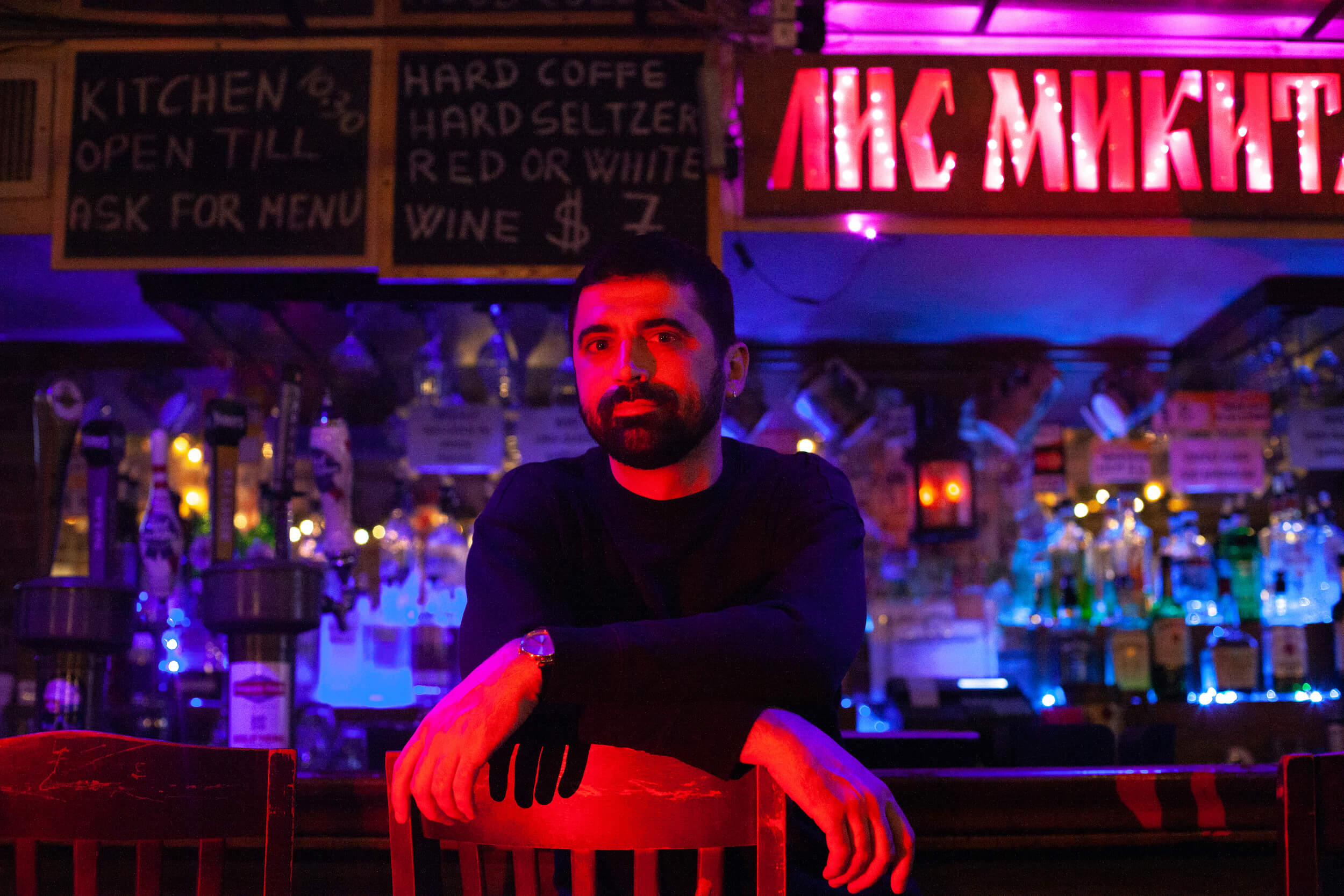
Before our interview, I stumbled upon your project about
It took five or six years. I was shooting the last pictures in a couple of countries when the book was about to go to print. It doesn’t mean that all I did was work on this project, though. Besides, I had no means to handle such a project on my own financially.
How much did you spend on it?
About $40,000, including flights, transportation, and interpreters. Sometimes, I lucked out and got to stay longer in the cities I worked in (I was assisting on photoshoots at the time) to photograph people for the Veterans. It saved me a lot of money.
Were among the people you photographed those who didn’t consider the war they fought a tragedy?
There were some.
There was one Brit who recounted his adventure with humour. The interview with Indian veterans was also curious. The Brits who came to their village to recruit people in the army promised locals who agreed to participate in hostilities the money they otherwise wouldn’t have gotten in their life. The Indians themselves didn’t understand what was happening.
I feel that people who fought in World War II didn’t realize the magnitude of the catastrophe, except for Americans, perhaps, who knew the war’s global impact by the moment of their Normandy landings.
Why do you think the humanity that survived the horrors of World War II let another war happen?
Why are we drinking again days after a crippling hangover? Horrors are quickly forgotten. Besides, nobody expects war to break out in their country.
Veterans is a photo project composed of portraits and World War II veterans’ accounts. Sasha Maslov photographed it in 18 countries and published it in 2015.
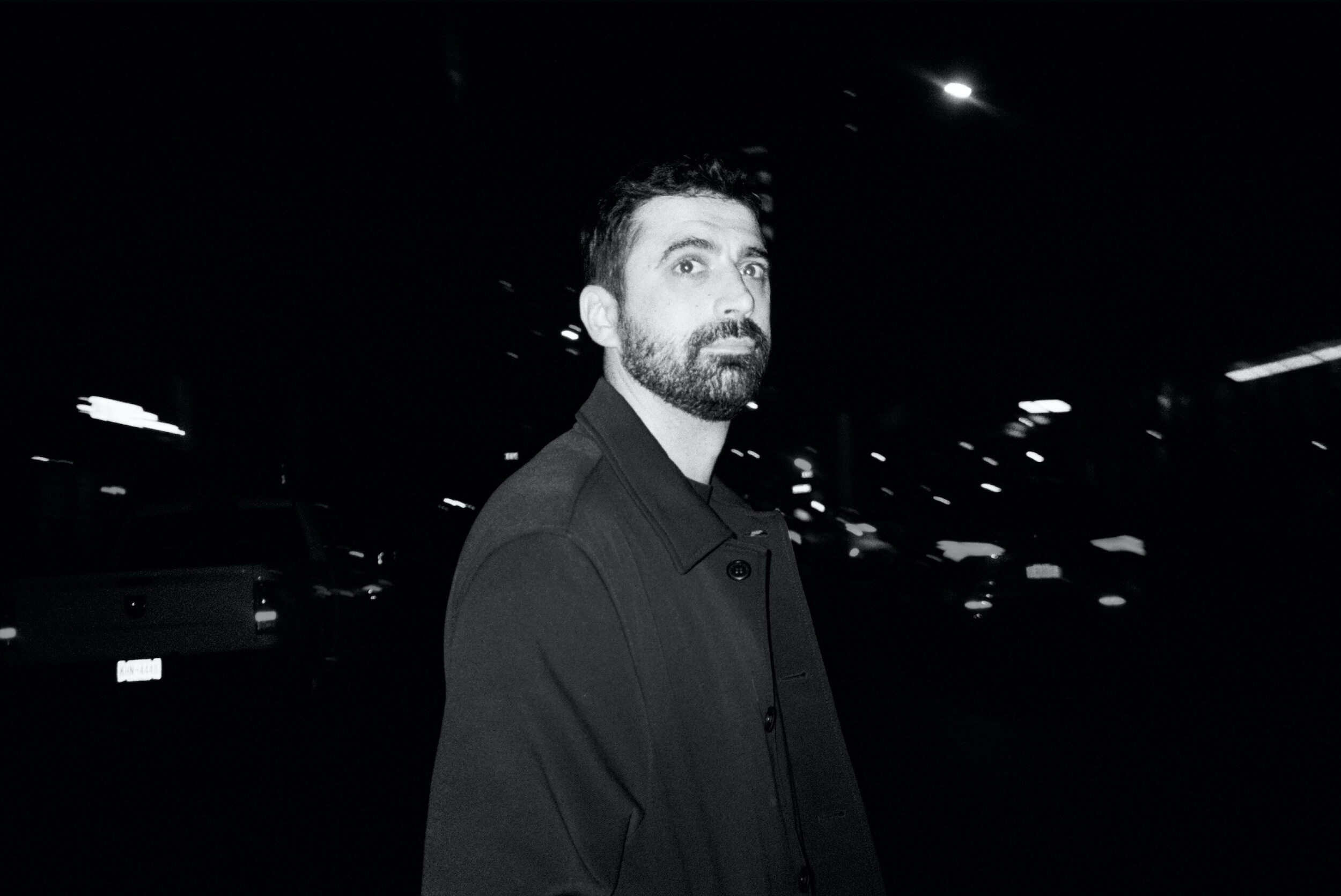

Finally, please tell us about the book you are currently working on.
It’s a collaboration with Saint Javelin. The book, dubbed Saints, is about people who fight, build, and save lives — the saints in this unholy time.
The book will contain portraits interspersed with documentary photos I took in Ukraine.
It is currently in the design stage, and we are still shooting the material. Hopefully, the last photos for it will be taken during our victory parade. The book will be available all over the world.
Naturally, it’s tough to make a book in a time of war, but we had an outstanding team. I feel it’s essential to find opportunities to do something together under such circumstances.
Photos of Sasha Maslov: Lena Shkoda, exclusively for Bird in Flight
New and best
